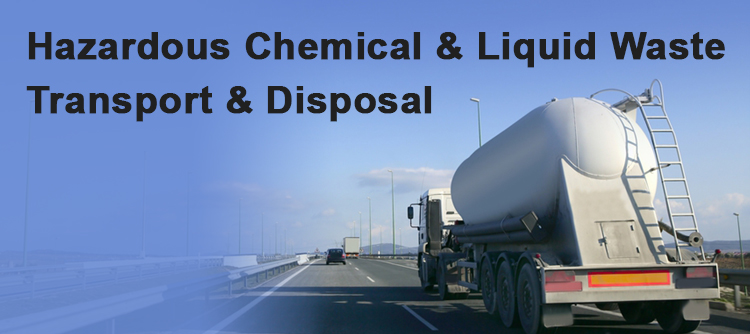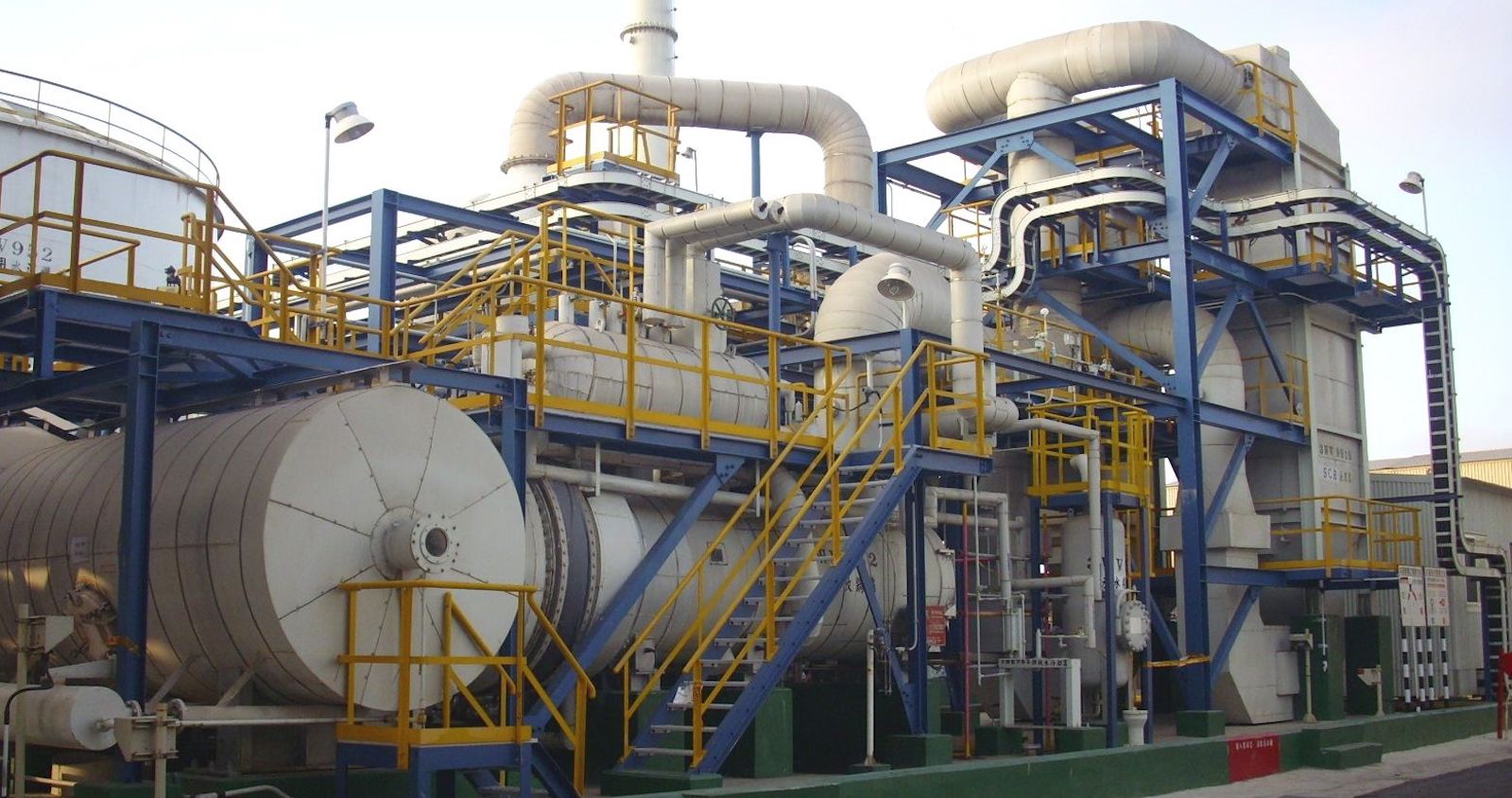Industrial Wastewater Treatment: Customized Solutions for Complicated Wastewater Difficulties
Wiki Article
Just How Fluid Garbage Disposal Works: A Detailed Introduction of Techniques and Technologies Utilized

Overview of Liquid Waste Types
The intricacy of fluid waste types necessitates a detailed understanding of their characteristics and effects for disposal. Fluid waste can broadly be categorized into numerous kinds, consisting of industrial, municipal, agricultural, and dangerous waste. Each group displays unique buildings, calling for certain monitoring methods to alleviate ecological and health threats.
Industrial liquid waste stems from producing procedures and commonly contains a variety of impurities, such as hefty metals, solvents, and organic compounds. Local fluid waste, largely comprising wastewater from homes and business facilities, contains organic issue, nutrients, and pathogens (industrial wastewater treatment). Agricultural liquid waste, consisting of runoff from ranches, might have fertilizers, pesticides, and pet waste, posing threats to water top quality and environments
Dangerous liquid waste is characterized by its toxicity, reactivity, or potential to trigger harm. This classification includes materials like acids, bases, and particular chemicals that demand rigid handling and disposal procedures. Recognizing these diverse liquid waste types is crucial for creating efficient disposal methods and making certain conformity with environmental guidelines. Appropriate category and characterization are vital for applying suitable treatment techniques and lessening the damaging influence on public health and the environment.
Physical Therapy Techniques

Testing is the initial action, where bigger particles and particles are gotten rid of from the liquid waste using screens or grates. In sedimentation containers, much heavier particles resolve at the base, forming a sludge layer, while the clarified fluid can be additional dealt with.
Filtering is an additional crucial approach that includes passing the fluid with porous products, such as sand or membranes, to capture smaller sized particles. This action enhances the top quality of the liquid, making it appropriate for subsequent treatment procedures.

Chemical Therapy Techniques
Chemical treatment strategies are crucial for effectively managing fluid waste, particularly in addressing dissolved and colloidal contaminants that physical techniques might not properly remove. These methods make use of numerous chemical agents to neutralize, speed up, or change unsafe compounds right into much less unsafe kinds.One common technique is coagulation and flocculation, where chemicals such as alum or ferric chloride are included in advertise the gathering of suspended particles. This process enhances sedimentation, enabling for simpler removal of the resulting sludge. In addition, oxidation processes, using agents like chlorine or ozone, are used to damage down intricate organic compounds and microorganisms, providing the waste safer for discharge or further treatment.
Neutralization is another crucial strategy, which adjusts the pH of acidic or alkaline waste streams to neutral degrees, preventing possible injury to downstream systems and the environment. Additionally, progressed oxidation processes (AOPs) utilize mixes of oxidants and ultraviolet light to deteriorate consistent contaminants, accomplishing a higher degree of treatment performance.
Biological Therapy Processes
Organic treatment procedures play an important duty in the monitoring of fluid waste by utilizing bacteria to decompose raw material and decrease contaminant levels. These procedures can be generally categorized into anaerobic and cardio treatments, each employing certain microbial neighborhoods to accomplish efficient waste deterioration.Cardiovascular treatment entails using oxygen to facilitate the failure of organic products by germs. This process is generally carried out in activated sludge systems, where oygenation containers offer a conducive setting for microbial development, resulting in the oxidation of natural pollutants. The resultant biomass can be separated from treated effluent via sedimentation.
In comparison, anaerobic treatment takes place in the lack of oxygen, counting on various microorganisms to break down natural issue. This technique is specifically advantageous for high-strength waste, as it produces biogas, a renewable resource source, while reducing sludge production. Technologies such as anaerobic digesters are regularly employed in industrial and metropolitan applications.
Both cardiovascular and anaerobic biological therapies not just lessen the environmental influence of fluid waste however additionally promote resource recuperation, making them vital components of sustainable waste management approaches. Their performance, efficiency, and flexibility sustain their widespread implementation throughout different fields.
Arising Technologies in Disposal
Cutting-edge techniques to fluid waste disposal are swiftly evolving, driven by innovations in technology and a boosting emphasis on sustainability. Among these arising innovations, membrane bioreactors (MBRs) have gained grip for their capability to integrate biological treatment with membrane layer filtering, resulting in high-quality effluent that can be reused in various applications. MBRs make it possible for smaller sized footprints find out here now and a lot more reliable operations contrasted to standard systems.Another appealing growth is the use of anaerobic food digestion incorporated with nutrient recovery modern technologies, which not only deals with fluid waste but also produces biogas and recuperates valuable nutrients like nitrogen and phosphorus. This twin benefit boosts source performance and reduces environmental influence.
In addition, progressed oxidation processes (AOPs) are being adopted for the deterioration of intricate organic contaminants. These approaches make use of powerful oxidants and drivers to break down contaminants at the molecular degree, using my response an extremely effective service for difficult waste streams.
Moreover, the assimilation of expert system and device understanding in waste administration systems is optimizing operational effectiveness and predictive upkeep, bring about reduced costs and improved ecological conformity. These innovations show a substantial shift in the direction of even more effective and sustainable liquid waste disposal techniques.
Final Thought
To conclude, reliable fluid garbage disposal demands a thorough understanding of numerous strategies and technologies. The combination of physical, chemical, and organic therapy techniques makes certain the effective administration of diverse waste types. Moreover, the introduction of cutting-edge modern technologies boosts therapy effectiveness and promotes sustainability in waste monitoring methods. By constantly progressing these techniques, it becomes possible to deal with the growing obstacles connected with fluid waste, inevitably adding to environmental management and source healing.Liquid waste disposal is an important element of environmental monitoring, needing a thorough understanding of different strategies and technologies customized to various waste kinds. Fluid waste can generally be categorized into a number of types, including industrial, municipal, agricultural, and harmful check my source waste. Agricultural fluid waste, consisting of runoff from farms, may consist of plant foods, pesticides, and animal waste, presenting threats to water quality and ecological communities.
Various physical therapy approaches play an essential duty in handling fluid waste properly - industrial wastewater treatment.In conclusion, effective fluid waste disposal necessitates a comprehensive understanding of various techniques and innovations
Report this wiki page